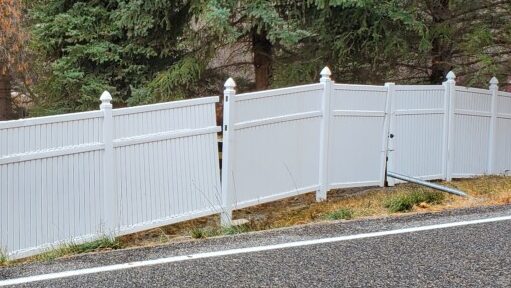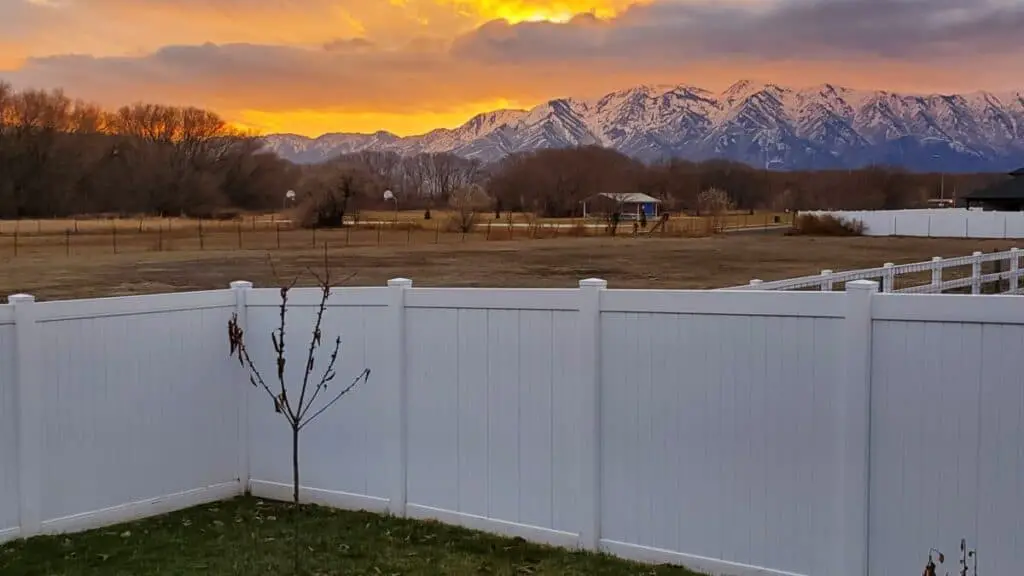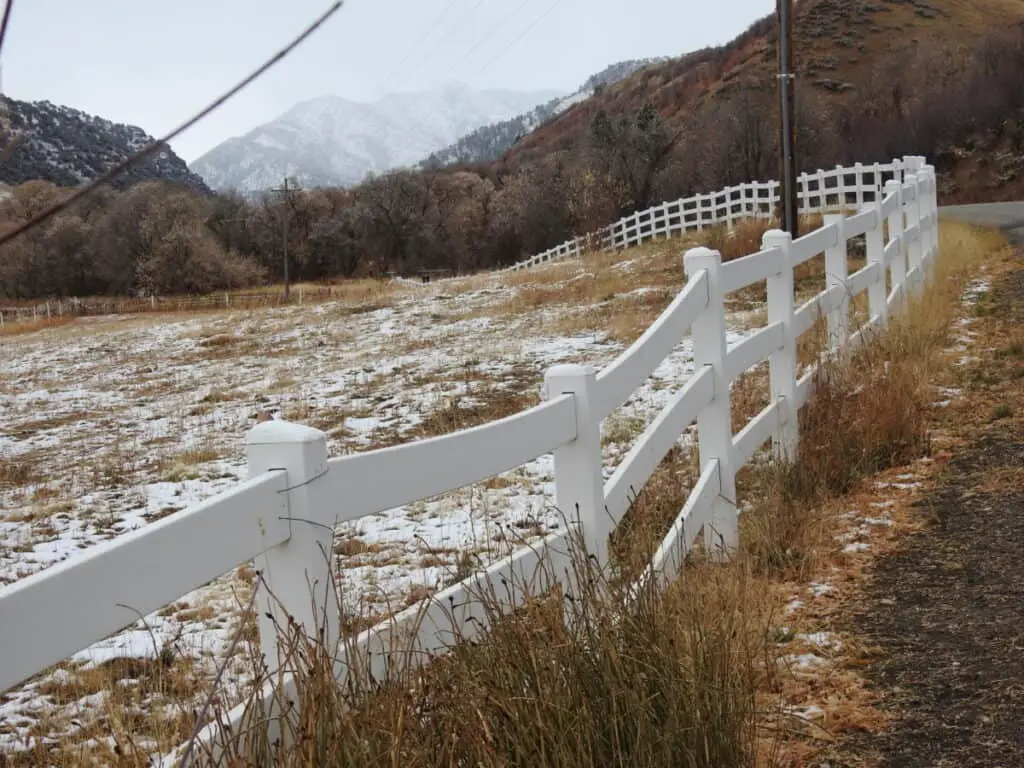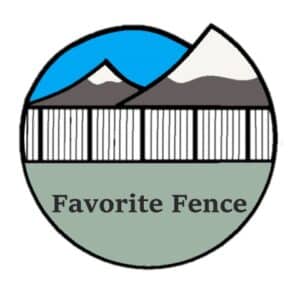Having been a general contractor and after having worked in the industry for many years, one common question that homeowners frequently ask when considering vinyl fencing solutions to meet their needs is whether vinyl fencing breaks easily.

Sudden volatile impact can chip or break vinyl fencing. However, repairs are easy to fix. Vinyl fencing is an extremely durable material fortified to withstand outdoor degradation for decades. It won’t fade, warp or lose its shape—enduring years of hot, wet and cold seasonal changes.
Vinyl fencing can provide a long lasting aesthetic maintenance free property perimeter. Whether the need is to obtain privacy or to define property boundaries, a properly installed vinyl fence is a durable solution that will enhance curb appeal and provide an appealing accent to the property and home.

Vinyl fencing (PVC—polyvinyl chloride) is a recyclable material that is manufactured via dual extrusion—creating a substrate (inner layer made from recycled materials) that provides strength and a cap-stock (out layer) that is infused with modifying elements and polymers that resist fading, UV radiation, and outdoor degradation. It is impervious to rot and decay and has five times the tensile strength than wood.
When installed properly and maintained, a vinyl fence will retain its aesthetic qualities and last for decades.
The Breaking Point: 6 Conditions Where a Vinyl Fence May Break
Like any construction material, vinyl can chip and break if subject to volatile impact or poor installation. The most common issues with breakage are listed below:
- Rock Chip: a lawn mower or weed-wacker can whip a rock, glass, or other debris nearly 50 feet at over 170 miles per hour. Not only can this cause injury or blindness, it can also pelt a chip or small hole into a vinyl fence. Hopefully you are wearing safety glasses when trimming to protect number one.
- Fortunately, most rock chips are small and not noticeable. However, if you are unfortunate to have a larger hole caused by a thrown rock—be grateful that it didn’t hit you. Make sure you have a replacement panel on hand for an easy repair.
- Prevention: Use low slow weed-wacker RPM’s. Mow and trim around the fence in the direction that throws debris away from the fence and not towards it.
- Errant Projectiles: If vigorously propelled, a hard errant projectile can chip or break a hole in vinyl fencing material. Examples include: a forcefully hurled rock, baseball, or other hard and dense objects. I once had a neighbor whose son shot an arrow, missed the target, and hit my vinyl fence. It created a quarter sized hole in the panel. Fortunately, no one was hurt.
- Extreme High Winds: A vinyl fence can break or shear off at the post if subject to extreme high winds and/or collision with large wind blown objects. However, many vinyl fences are designed to meet or exceed Florida’s wind rating standard to sustain high winds of up to 75 MPH and wind gusts up to 115 MPH.
- Prevention: Additional support can be added to the posts by way of wood and/or metal inserts. Also, spacing can be reduced from 8 foot on center to 6 foot on center (personal preference for standard installations). Posts and panels spaced closer together makes them far less likely to be subject to wind damage.
- If you live in an area that is subject to occasional high winds, it would be prudent to reinforce privacy and semi-privacy fence posts. See my post that goes into more detail about post reinforcement.
- Poor Installation: One of the main reasons why a vinyl fence may be subject to breakage is because of poor installation. A post that is installed incorrectly is subject to the heaving, swelling, and the settling of the earth around it causing the post to shift and place undue pressure on the inter-joining rails. If under substantial pressure, rails can break.
- Causes of breakage due to poor installation:
- Insufficient Concrete: The base of a post may not be adequately supported if installed with insufficient concrete. It may be subject to easy displacement by ground movement.
- Bottom Rail Set in Direct Contact with the Soil: If the bottom rail is set without 2-3 inches of ground clearance, the swelling and heaving of the soil around it can apply significant upward force on the rail. This upward force can cause the upheaval of adjoining posts and/or breakage.
- Non Routed Posts Set on a Slope or Hillside: If a fence is installed on a hillside, the fence may run parallel down the slope but the posts are still installed vertically. To allow more room for the rail to be received into the post, the pre-routed rail slot in the post must be enlarged.
- When the rail slot is not enlarged and the rail is forced into the post, a fulcrum of significant undue constant pressure is applied to both the post and rail. Which may lead to breakage and/or the upheaval of the post.
- Causes of breakage due to poor installation:
- Busy Road System: Any fence installed closely to a busy road system is going to be subject to a significant amount of roadside abuse.
- Errant Debris: the roadside is constantly littered with debris that is purposefully or inadvertently launched from passersby.
- Rocks, lugnuts, tire balance weights, garbage, bottles, construction debris. . .you name it. These items can be flung from vehicles one way or another at high velocity and can damage or break vinyl fencing.
- The Occasional Collision: Motorists and cyclists may collide with the fence and cause damage.
- General Abuse: “I’m not sure why that kid is whacking the fence with a stick—but he is.” The random things that people do as they walk by a nice fence can sometimes cause damage and lead to breakage.
- Errant Debris: the roadside is constantly littered with debris that is purposefully or inadvertently launched from passersby.
- Rural Highway Proximity: A vinyl fence installed closely along a rural highway can be subject to all of the impacts associated with a busy road system and more. Usually a rural highway is not paralleled with a sidewalk or other excavated features that tame the banks along the roadside.
- Roadside banks are subject to large amounts of water runoff and/or forceful snow removal. Not only can snow removal cause damage to the fence, but the excessive water runoff and snow buildup can cause the soil to be highly susceptible to drastic swelling and settling—conditions that wreak havoc on vinyl fence posts.
- Vinyl fence posts and rails can be forced out of alignment and placed under significant pressure that can lead to breakage.

Repairing a Vinyl Fence
Usually, damage to a vinyl fence occurs with the post and rails. Fortunately, these repairs are easy.
- Remove the post cap. Inside the top of the post you’ll see two screws that secure the top rails. Unfasten them.
- Slide the rails out of the post. Replace panels and rails as necessary.
- Resecure the fence.
If the posts need to be replaced, realigned, or properly reinstalled, you’ve got a bigger project on your hands that will require you to dig out the post and concrete that it is set in. Though the labor may be difficult, the repair procedure is actually pretty simple.
- Dig out and remove the old post. If you are reusing the post, you’ll need to break off the old concrete.
- Dig out the hole to make sure that it is deep enough to install the new post inline with the other remaining posts.
- Drop the new post into the hole and fill it up with concrete within 2-3 inches of the surface.
- Make sure the new post is plumb and inline with the others. Let the concrete set.
- Reinstall the rails and panels.
- Refer to my post for more information on setting vinyl posts.
It would be prudent to have a few replacement panels available to make repairs without having to track down the manufacturer each time repairs are needed.
